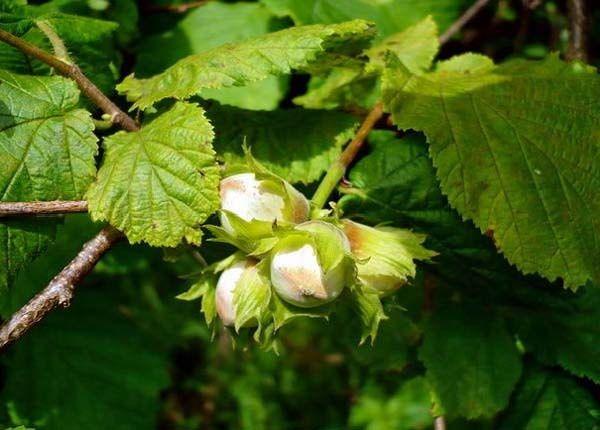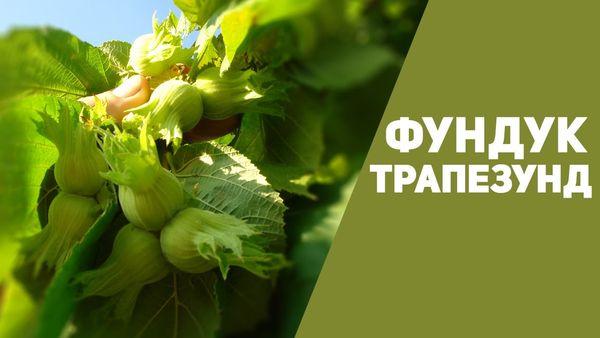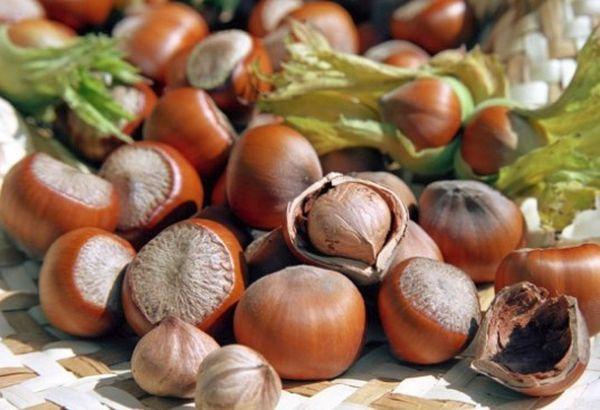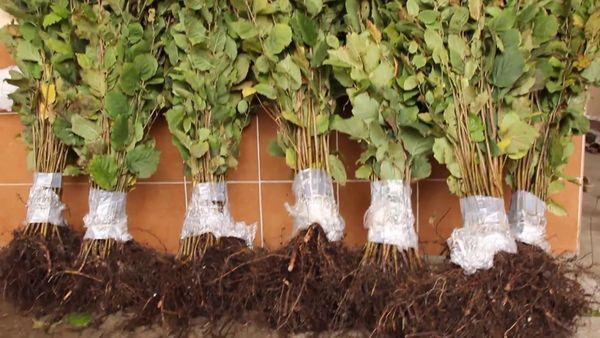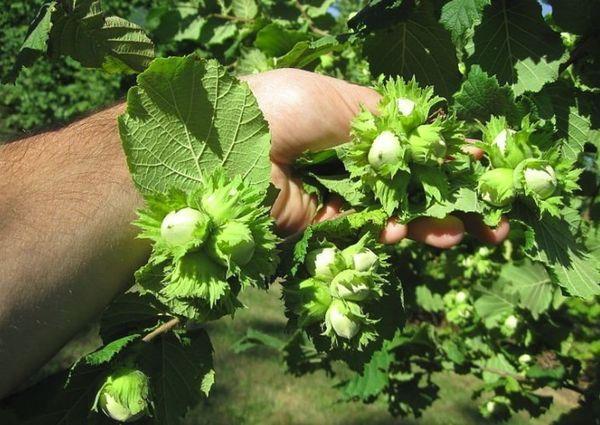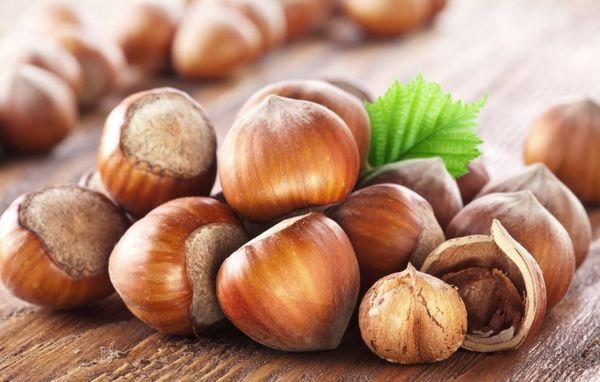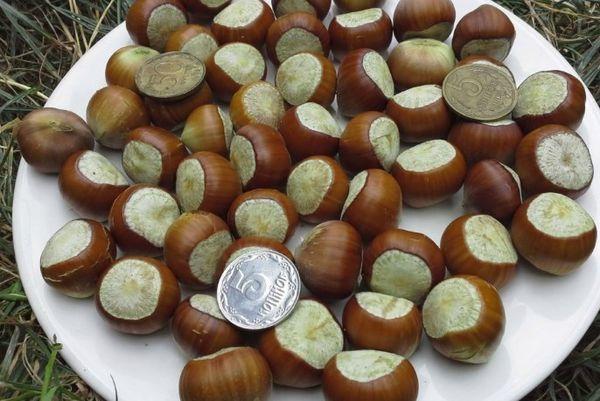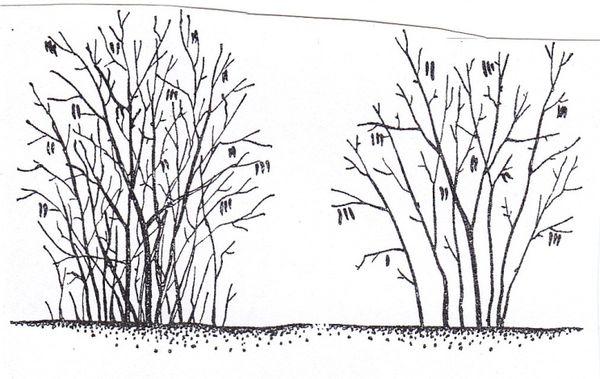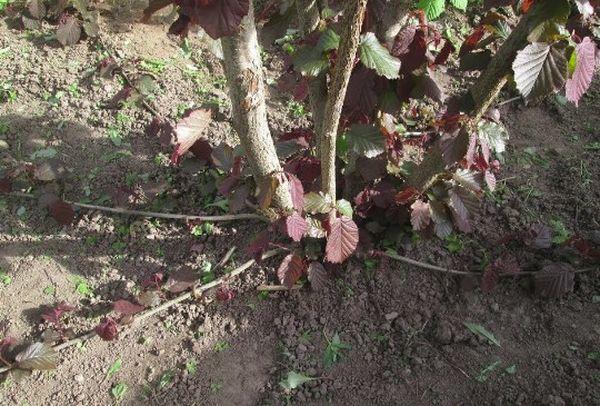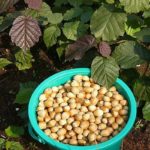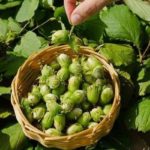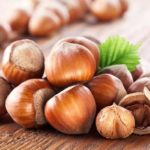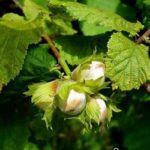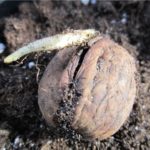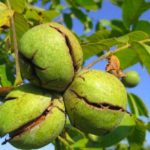Hazelnuts are very beneficial for the human body, which also applies to the Trebizond variety. High-quality nuts are not cheap, so buying them can be problematic. The way out of the situation is to plant hazelnuts in the area near the house. Take good care of the tree, and after a while you will be able to enjoy the nuts you grew with your own hands.
- Description and characteristics of Trebizond hazelnuts
- Advantages and disadvantages of the variety
- Features of growing crops
- When and where to plant?
- Preparation of planting material
- Landing specifics
- Hazelnut care
- Watering system and periods
- Fertilizer
- Mulching
- Plant pruning
- Diseases and pests of crops
- Reproduction methods
- Collection and storage of hazelnuts
Description and characteristics of Trebizond hazelnuts
The variety is a perennial shrub, reaching a height of 7 m. It has long flexible branches, densely covered with rounded leaf plates. The dark green crown changes color in autumn and becomes burgundy. Trebizond hazelnuts often play the role of decoration in the garden.
The variety begins to bloom in winter in December and continues until March. The bush has both female and male flowers. The buds and catkins have reddish stigmas. They can withstand the most severe frosts while maintaining their vital functions.
The nut buds close in cold weather and open in warm weather. This is an excellent indicator of changing weather conditions. The plant is cross-pollinated and does not require bees or other insects for propagation. To increase the productivity of hazelnuts, different varieties of nuts are planted in the garden.
The hazelnut variety differs from wild hazel in the size of the fruit. They are several times larger, the tasty fruit is covered with a thin shell. You can enjoy nuts at the end of summer.
Advantages and disadvantages of the variety
Advantages of culture:
- nutritious fruits with an incredible nutty taste;
- landing at the site;
- possibility of accelerating fruiting;
- a bountiful harvest;
- Manual and mechanical assembly is possible.
Harvest ripening is much earlier than other varieties. As for the disadvantages, Trebizond has no obvious disadvantages. Each person who has tried to grow a hazelnut variety determines them independently, based on their own preferences.
Features of growing crops
Agricultural technology - without this part it is impossible to get healthy and strong shrubs that will regularly produce crops. The place for planting, the material, as well as the scheme according to which the shrubs are planted are important.
When and where to plant?
Climatic conditions are taken into account before the event.Hazelnuts are planted in areas with a warm climate in early autumn. The root system is firmly fixed in the chosen place until the first winter cold. Thanks to the climate, the bush has enough time to stock up on moisture. After winter, this will help the hazelnuts to grow immediately.
In the northern and central regions, spring planting is recommended. In the second case, planting in the fall is also allowed.
Hazelnuts have the ability to adapt well to any soil composition. Thanks to this feature, the nut is grown not only on an industrial scale, but also on the plots of amateur gardeners. Trebizond will grow well in places where cucumbers and tomatoes cannot be planted.
Walnut is not afraid of rocky terrain. It is suitable for soil that cannot be plowed or watered. This does not affect the yield in any way; hazelnuts maintain their performance at decent levels.
Preparation of planting material
After hazelnut propagation, young seedlings are obtained, this moment plays an important role. If a young tree for planting is obtained in the wrong way, fruiting is delayed. In turn, the bush begins to produce nuts no earlier than after 5 years. The fruits are crooked and very small.
Before planting, hazelnut seedlings must undergo a little preparation. They are kept for some time in water or wet soil. The root system must be completely immersed in liquid or moist soil. No further specific procedures are performed. Even an inexperienced person who has not previously planted crops can cope with this.
Landing specifics
Standard planting is best suited for the crop. The following schemes are suitable for Trebizond - 4 x 5, 4 x 6, 5 x 6 and 6 x 6. The classic ones include nest planting.The selected plants are planted in a circle, following a 6 x 6 pattern. In this case, the root shoots are removed, and the plants are formed into a single trunk.
Before planting, the land is fertilized. A mixture prepared at home will do. Phosphorus-potassium fertilizers are mixed with manure in a 2:1 ratio. Additionally, 5 kg of manure is poured into each hole.
After planting is completed, the hazelnut seedlings are pruned.
All sprouts should be the same height. It should be no more than 20 cm from the ground surface.
Hazelnut care
If the planting of seedlings was successful, this does not mean that you can forget about the continued existence of the nut. For successful growth, hazelnuts need care until the seedlings become stronger. We are talking about the standard scheme - watering, fertilizing, mulching. Also don't forget about pruning.
Watering system and periods
The ideal option is to plant the nut near bodies of water. This option solves the watering problem. If it is not possible to plant hazelnut seedlings next to the pond, drip irrigation from a barrel is constructed.
If the tree does not receive enough moisture, the nuts will be small. Watering of young seedlings is carried out in the first 3 years after planting. One young tree requires at least 3 buckets of water. The calculation is as follows: 300 liters of water are used per hundred square meters.
When hazelnut fruits ripen, watering increases. The soil moisture saturation schedule is developed based on precipitation in a certain area.
The irrigation system is divided into 5 parts and designed for a year:
- The first watering of trees is carried out at the end of May.
- The soil is saturated with moisture again at the beginning of summer.As a rule, vegetative growth of the nut and its flowering are observed during this period.
- The beginning of the third period falls in mid-summer. At this time, the fruit ovary is formed on the hazelnut.
- The fifth and final period is held in mid-autumn. The plant needs to stock up on moisture, and thus prepare for the winter.
In the fourth year after planting hazelnuts, soil moisture saturation increases. Shrubs need moisture even more if various herbal plants grow next to them. When flowers or bushes grow between tree trunks, watering is doubled.
Fertilizer
Mineral fertilizer is poured into the hole prepared for the seedlings. It is based on potassium salt, superphosphate and humus. The next stage of fertilization occurs during fruit formation. At the beginning of summer, hazelnuts are fed with urea.
A substance with a concentration of 0.5% is taken. A nutrient solution is prepared on its basis. Fertilizer is also prepared from compost. It is considered one of the best fertilizers, as it is best absorbed by the roots.
Mulching
The procedure has a lot of advantages, so it must be carried out. If you mulch the tree trunks, this will help retain moisture. The layer laid on the surface of the soil prevents the growth of weeds. Air masses easily penetrate the hazelnut root system, in turn, air exchange prevents rotting.
Plant pruning
Removal of excess branches is carried out after flowering is completed. The main stems are shortened by half during the first 6 years. In this case, the height of the tree should be within 2.5 m. Pruning of side shoots is carried out to 4 buds.
If Trebizond has reached the age of 6 years, it should have no more than 10-15 shoots. Their height is 2.3 m. Each of them must be covered with flowers and have fruit buds.
For seven-year-old hazelnuts, break the side branches in half, making sure that 6-8 leaves remain from the base. The pruning method is called drying. Thanks to pruning using this method, more light and air enter the crown. In turn, this has a beneficial effect on the maturation of fruit buds.
Diseases and pests of crops
Insects that often annoy hazelnuts are false scale insects, longhorned beetles, nut weevils, chafer beetles, mites and aphids. Insecticides and pesticides are used to combat them. Treatment with solutions is carried out in the spring.
Improper care of seedlings leads to the appearance of diseases such as powdery mildew and brown spot. Hazelnuts respond well to treatment with drugs that contain copper. This may be Bordeaux mixture or copper oxychloride. Powdery mildew dies after contact with sulfur-based solutions.
Reproduction methods
The classic way to obtain new seedlings is to plant branches - layering.
The process is not considered complicated and goes as follows:
- Horizontal grooves of small depth are dug in the soil. Branches are placed in them and pinned. Last year's shoots are suitable for this. Old ones do not take root so quickly and are characterized by slow development.
- Everything is covered with humus on top
- The grooves are watered, and oblique cuts are made at the fastening points. The latter accelerates bud growth.
- The upper parts of the branches are tied up, and the growing point is pinched.
The procedure is carried out in early spring or autumn.
Collection and storage of hazelnuts
Nuts begin to be picked from the branches at the end of August. The readiness of the crop for harvesting is indicated by dry wrappers and falling fruits. The collected nuts are dried and prepared for further storage.
If the hazelnuts are planned to be stored for no more than a year, the fruits are kept indoors at a temperature of +4-+13 degrees. Storage is possible for 3 years, and the temperature should not go beyond 0-+3 degrees. The harvest from one bush reaches 15 kg.

